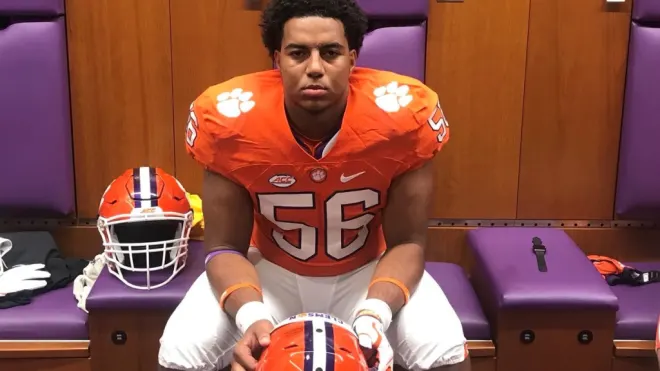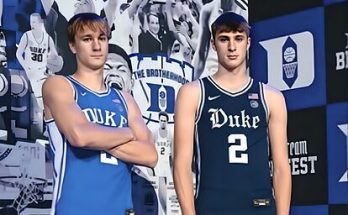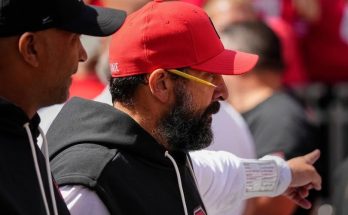Clemson just made one of the boldest defensive moves of the offseason, flipping a high-profile Notre Dame commit and simultaneously landing a former Virginia Tech standout defensive back in a stunning dual addition to their secondary. It’s the kind of aggressive recruiting and portal maneuvering that sends a message—not just to the ACC, but to the entire college football landscape: the Tigers are coming for blood in 2025.
For a program often viewed as stable and methodical, this offseason splash reveals a different side of Dabo Swinney’s operation—one that’s increasingly responsive to the ever-evolving demands of roster management in the modern NIL and transfer portal era. With the departures of key veterans and several inconsistent performances in the back end of the defense last season, this move feels like more than just roster reshuffling. It’s a calculated step toward shoring up a secondary that has at times looked vulnerable against high-octane offenses.
The crown jewel of this shake-up? The flip of a four-star cornerback who had been firmly committed to Notre Dame since the fall. The Irish believed they had secured one of the future anchors of their defensive backfield. But Clemson’s persistence—and perhaps a clearer path to early playing time—proved too much to ignore. The flip came quietly but decisively, with multiple sources confirming the shift just hours before it became public. This is a cornerback with elite closing speed, a physical edge, and the kind of instincts coaches dream about—exactly the profile the Tigers have lacked since the departure of players like Andrew Booth Jr. and A.J. Terrell.
On its own, that would have been enough to move the needle. But Clemson wasn’t done.
Enter the second headline-grabber: a former Virginia Tech starting defensive back entering the fold via the transfer portal. With multiple years of Power Five experience and a reputation as one of the Hokies’ most physical defenders, his arrival gives Clemson not just depth but immediate impact capability. Known for his ability to match up against slot receivers and play both safety and nickel, his versatility adds layers to what defensive coordinator Wes Goodwin can deploy schematically.
Together, these two additions could represent the most significant upgrade to the Tigers’ secondary in several years. For context, Clemson finished the 2024 season ranked in the middle of the ACC in passing yards allowed per game—an unusual dip for a program that prides itself on defensive dominance. Opponents regularly found success on third-and-medium situations, often exploiting soft coverage or late communication in the defensive backfield.
Now? Those days may be over.
The Notre Dame flip brings young, dynamic talent to the outside, while the Virginia Tech transfer offers savvy and physicality in the slot or even at safety. It’s a perfect blend of promise and proven production. Clemson’s coaches are confident that this combination addresses both the short- and long-term needs of the defense.
And don’t underestimate the emotional ripple effects. Flipping a player from Notre Dame—a program that’s long been seen as a recruiting peer and, at times, a rival on the national stage—signals that Clemson is still a top-tier destination even in an era dominated by NIL dollars and rapid-fire decommitments. It’s a reminder that Swinney and his staff still carry significant clout when they set their sights on a target.
This is especially important considering the Tigers’ recent recruiting battles. While Clemson has remained a consistent top-15 recruiter, it has occasionally fallen behind SEC giants like Georgia, Alabama, and LSU when it comes to luring elite secondary talent. With this move, Clemson closes that gap and plants its flag firmly in the mix for elite defensive playmakers once again.
Clemson fans have been hungry for a return to national championship contention, and while quarterback development and offensive line play are often the hot-button talking points, the truth is that defensive consistency—especially against the pass—remains just as crucial. The Tigers’ 2025 schedule is loaded with offensive firepower, including matchups with Florida State, NC State, and non-conference heavyweight Georgia. Strengthening the secondary ahead of those battles may prove to be the move that defines the season.
It’s also worth noting the quiet but calculated role that NIL may have played in this saga. While Swinney has been selective in how his program navigates NIL deals, sources suggest the Tigers’ collective was both organized and proactive in building out packages that prioritized long-term development over short-term paychecks. For both players involved—the flipped recruit and the Virginia Tech transfer—the message was clear: at Clemson, you’ll develop, you’ll play, and you’ll be prepared for the next level.
The locker room response has reportedly been overwhelmingly positive. Veteran leaders on the defense, particularly at linebacker and safety, have already reached out to welcome the newcomers, signaling a healthy and competitive atmosphere heading into fall camp. That chemistry could be the secret ingredient in elevating Clemson from a perennial ACC contender back to a legitimate national threat.
For Notre Dame, the flip is a tough pill to swallow. The Irish had invested time and resources into building a relationship with the cornerback and were counting on his presence as part of their future defensive core. While Marcus Freeman and his staff will likely recover—Notre Dame’s 2025 class remains among the nation’s strongest—this particular loss stings. Losing a commitment to a program like Clemson is one thing; doing so this close to the summer workout window is another.
For Virginia Tech, the departure of a veteran defensive back is part of the ongoing reality of the transfer portal era. Though the Hokies are developing younger players and working to reestablish themselves as an ACC power, losing battle-tested defenders like this certainly makes the climb steeper.
In the end, however, this moment belongs to Clemson.
The Tigers didn’t just poach a commitment. They secured a future lockdown corner and a versatile, hard-hitting veteran. In a single swoop, they dramatically improved a unit that was desperate for depth, swagger, and skill. If this offseason had felt a bit too quiet in Death Valley, that silence has been shattered.



